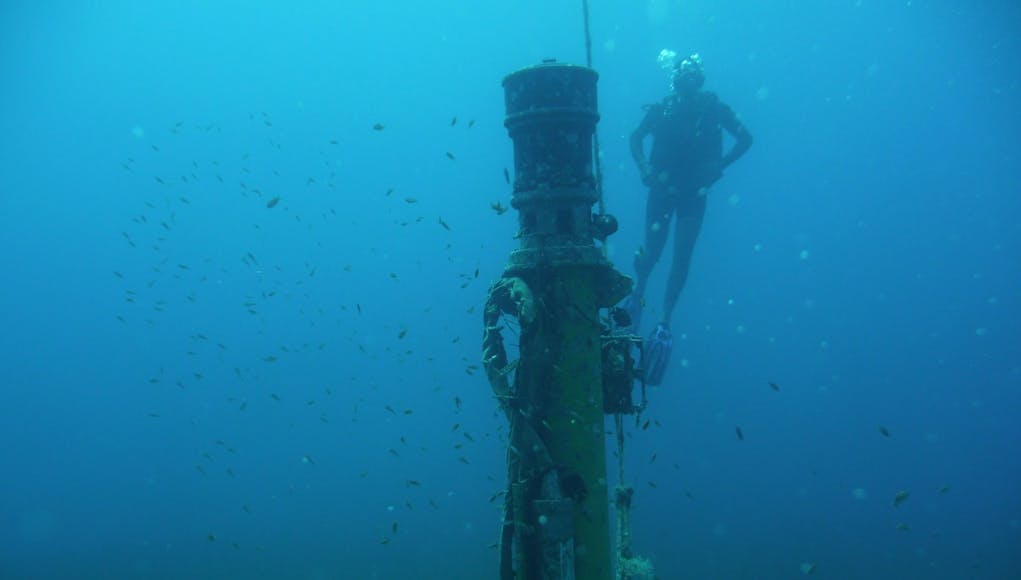Threats to navies operating worldwide are constantly evolving, from new and increasingly sophisticated technologies to more traditional threats that are sometimes harder to detect.
Today, navies face a constant battle to stay on the front foot in protecting people and assets.
This article was submitted by Simon Goldsworthy, Global Business Development Manager, Wavefront Systems, and is the opinion of the author and not necessarily that of the UK Defence Journal. If you would like to submit your own article on this topic or any other, please see our submission guidelines.
When thinking of drone threats, traditionally you will think of the aerial domain. Allied forces have had to ensure countermeasures are developed to keep pace with a vast range of drone platforms, from small, homemade devices to large, sophisticated UAV platforms. These threats have evolved quickly, and allied forces have adapted to respond and deploy technologies that protect people and platforms.
Now, we are seeing an increasing threat posed by unmanned platforms in the underwater domain, and this presents an entirely new set of challenges when developing detection systems and countermeasures. Detecting threats on the surface through above water surveillance can be controlled through several means, including CCTV, FLIR (Forward Looking InfraRed) radar, and access control measures. However, the subsea presents potential foes with a covert environment where visibility, terrain, noise, and naturally occurring fauna, animals, and debris make threat detection and classification a seemingly insurmountable challenge, leaving vessels and crews extremely vulnerable to attacks.
The underwater space is no longer solely the domain of large, manned submarine platforms, and new threats are quickly emerging from autonomous, agile UUVs, bringing an entirely new challenge to our forces. Should the development of these UUV platforms reflect even half the pace at which aerial drones evolved, it becomes critical that allied forces are armed with the technologies and expertise they need to be able to detect and then counter these threats.
The nature of subsea threats
The development of unmanned subsea platforms has moved on significantly, with many academic establishments with a waterfront regularly testing UUV technology with their own software. What we have in the subsea realm now is where we were with air drones ten years ago, but commercially availability is still a way off due to their expense. However, this does not mean that navies can ignore the threat. The fact is that these threats will continue to evolve and new subsea platforms will be developed imminently, and countermeasures and detection technologies have to be able to keep pace with these new technologies and capabilities.
For detection and navigation, the key difference that sets surface and subsea drones apart is GPS as the satellite-based navigation system does not work underwater, making accurate positioning underwater an issue. Visually you cannot see very far underwater, making it harder to use cameras and radars to see threats in an environment that is difficult to evaluate. The reliable detection of underwater intruders of any form is a notoriously tricky problem. In the case of combat divers for example, the threat is incredibly small and extremely quiet, whereas a UUV is also fast-moving and difficult to track.
Traditional subsea detection technologies rely on acoustics and sonar, however, this becomes incredibly challenging in key strategic areas such as ports and harbours where a number of vessels and crew could be under threat. These areas are some of the noisiest acoustic environments you can find, where multiple, often large, and therefore ‘noisy’ vessels constantly come and go, and depth sounders may be continually active. In addition, the relatively still water creates a complex thermal structure and one where you’re unlikely to be able to rely on a low reverberation seabed. In congested and challenging port and harbour areas, the sound velocity profile will constantly change.
It’s not just detection that presents a challenge. Once a target is detected, it must also be classified and distinguished from marine fauna. Identifying whether a potential threat is a harbour seal, a terrorist diver, or UUV is a determination that must be made correctly, or the consequences could be dire.
Neutralising threats: knowledge is power
New technologies need to apply in-depth technical knowledge and understanding of monitoring to identify, classify, and neutralise a range of new threats to support allied forces. The more navies understand the threat landscape in the unseen subsea environment, the more protection they can offer their crew and vital assets. Only then can they ensure that deployed fleets can carry out their operations safely and without threat to the crew’s lives.
As leading global experts in subsea technologies, Wavefront Systems looked to address challenges by bringing a portable, lightweight detection system to market that could be used to detect threats in shallow waters and over a wide range. As a result, Wavefront Systems developed the Sentinel system in collaboration with its sister company Sonardyne, capable of emitting a 360° linear-period-modulated (LPM) pulse and using 256 receive beams equally spaced along a perimeter to detect and discriminate targets at up to 1500m range.
To support end-users with system integration for air, surface and subsea threat detection techniques, algorithms and signal processing tools must be constantly developed to create systems that encompass a protective barrier for all potential targets. With effective threat detection and classification in place, navies are best able to keep assets and personnel safe on operations. We are applying new technologies, in-depth technical knowledge and our understanding of underwater monitoring with the ability to analyse the subsea environment to identify, classify and neutralise a range of new threats.













